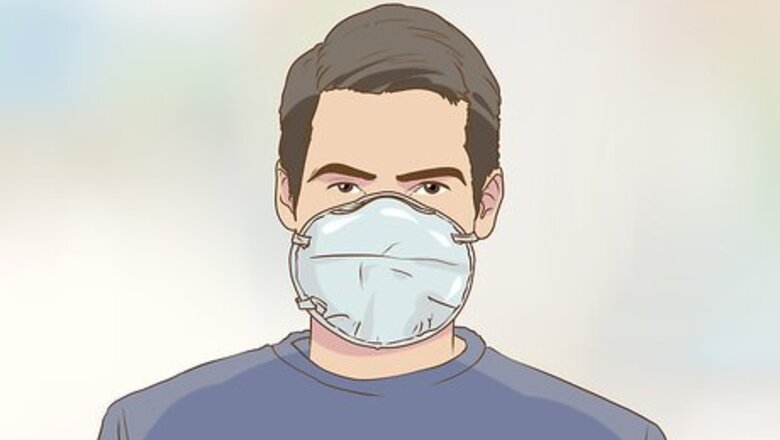
views
Evaluating the Area
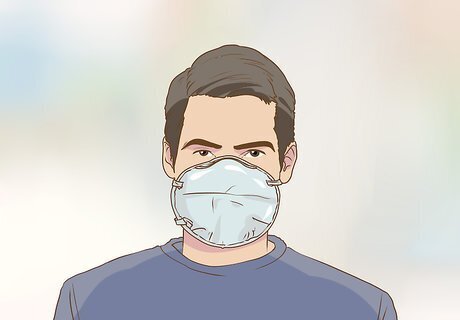
Wear protective gear to evaluate and clean mold. Put on an N-95 respirator, which you can purchase online or from a hardware store. Follow the instructions that came with the respirator to ensure it fits properly. Wear goggles without ventilation holes. Put on long gloves that end at the middle of your forearms.
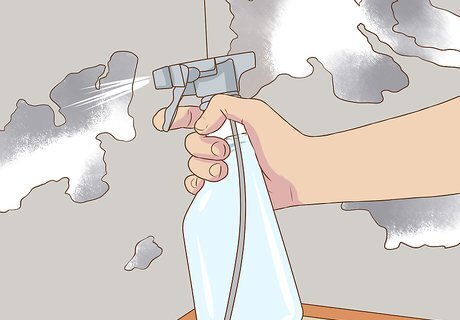
Test the substance with water to confirm that it’s white mold. Put some water in a spray bottle. Spray the substance and observe whether or not it dissolves. If it doesn’t dissolve, it’s probably white mold. If it does dissolve, it is another substance, such as efflorescence. White mold can be confused with efflorescence, a mineral deposit caused by water seepage. White mold is usually found in cool and damp areas, such as basement walls. It appears white or light gray, like a coating of unsettled dust. Closer inspection under good lighting will reveal a fungal growth pattern of spots like tiny mushrooms.
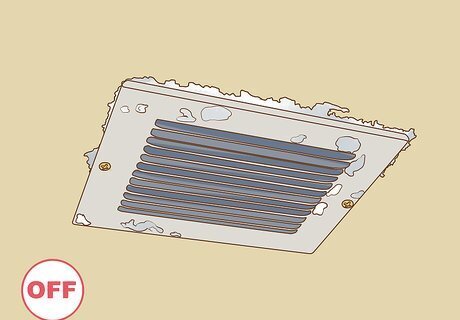
Turn off the HVAC system if there are signs of contamination. Look for mold near the intake for your heating/ventilation/air conditioning system. Check inside the air ducts for a musty smell or visible mold growth. If you don’t find any of these signs, and no one in your household has unexplained symptoms, illness or allergies, your air ducts are probably not contaminated. If you suspect or find signs of contamination in your HVAC system, don’t run it until you have the air ducts cleaned. It’s normal to find dust in return registers, which you can vacuum or remove to clean.

Call a professional mold removal service for serious mold growth. Consult with a professional if there’s a strong odor, damage from contaminated water, and/or areas of mold larger than ten square feet (three meters), approximately three feet by three feet (91 cm by 91 cm). The area may need to be sealed off with plastic sheeting, while the HVAC is closed and sealed. For instance, a potent, moldy odor could mean there is unseen mold growth under flooring, behind walls or beneath baseboards. Read online reviews or get a referral for a qualified mold remediation contractor. You may be able to obtain a free estimate and report on what services are needed. If you hire a contractor, check their references first and ask them to follow current EPA recommendations or other professional guidelines.
Removing the Mold

Decide what to clean and what to throw out. Throw away disposable items, such as cardboard, if contaminated. Absorbent materials like carpet and ceiling tile with visible mold growth will be difficult or impossible to thoroughly clean, so you may want to replace them. Hard surfaces can usually be scrubbed with soapy water. Consult with a specialist if your item is expensive, has sentimental value, or if you’re unsure about the best way to clean it. If white mold is in your smoker or grill, follow the cleaning instructions that came with the product. For example, ceramic cookers should be cleaned with heat only, not chemicals or harsh scrubbers.
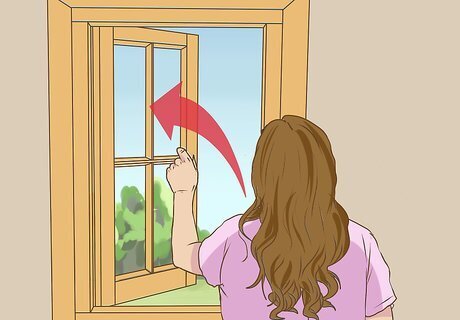
Ventilate the area, if needed. If you’re using bleach or another chemical agent, ventilate the area by opening the windows, if possible. If the mold is inside of a vehicle, park the vehicle in direct sunlight. Open the windows and doors, regardless of which cleaning agent you’re using. Let the vehicle air out for fifteen minutes or more before proceeding with cleaning.

Clean mold with a mild detergent solution. Mix detergent and water to create a soapy solution effective for scrubbing mold from hard surfaces. If your mold problem is fairly mild, this solution should get rid of it. For more serious mold growth, you may need to try a stronger chemical solution.
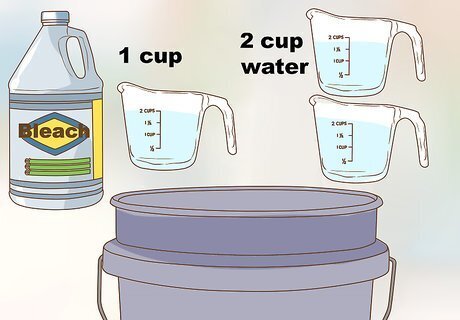
Try a chemical solution. Combine one part bleach to three parts water in a bucket. Other options are a borax and water solution, a baking soda and water solution, 3% hydrogen peroxide, or undiluted, distilled white vinegar, any of which can be applied using a quart-sized spray bottle. If you’re using a strong disinfectant, such as bleach, wear safety goggles and gloves made from natural rubber, nitrile, neoprene, polyurethane or PVC. Spot test a small, inconspicuous area first, if desired, to ensure no damage occurs from your chosen cleaning agent. Don’t mix different cleaning agents, since they may not be compatible with each other. Never mix bleach with other chemical agents or products that contain ammonia.
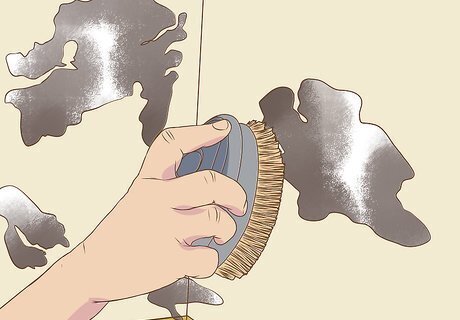
Scrub the moldy area with your cleaning agent. Apply the solution to the area using a sponge or spray bottle. Let the cleaning agent sit for five to ten minutes. Use a scrub brush or old toothbrush to scour the mold. Wipe down the area with an old cloth or paper towel to remove the residual mold.
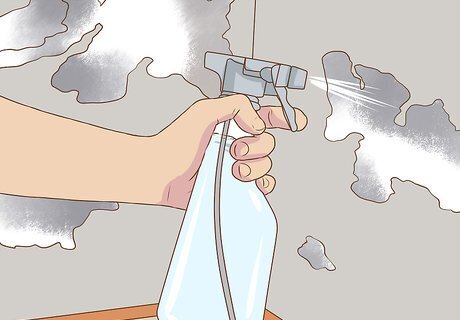
Rinse the area, if possible. If the area is a hard surface, use a sponge or spray bottle to rinse the area with water. Allow the area to dry. Visually inspect the dry area for signs of mold. If you suspect it hasn’t all been cleaned, repeat the scrubbing and rinsing process.
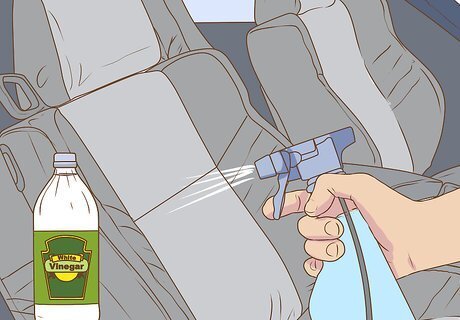
Clean fabric with vinegar. Opt for vinegar if the mold is on vehicle upholstery or carpeting, since it’s less likely to stain than chemical agents and doesn’t need to be rinsed off. Fill a quart-sized spray bottle with undiluted, distilled white vinegar.
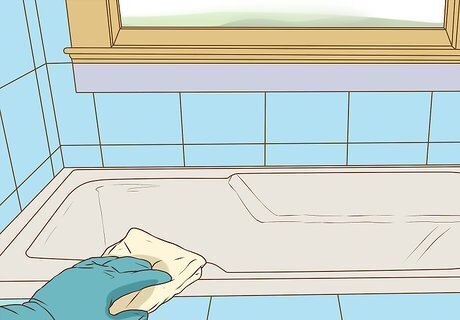
Clean white mold from a hot tub. Drain the tub and turn the power and circuit breaker off. Clean all surfaces, especially where there is visible mold. Remove the filter and either chemically clean or replace it. After refilling the hot tub, shock it (with a triple or quadruple dose), drain the tub, refill, shock it again (with a normal dose), then test the water for balance.
Preventing Mold
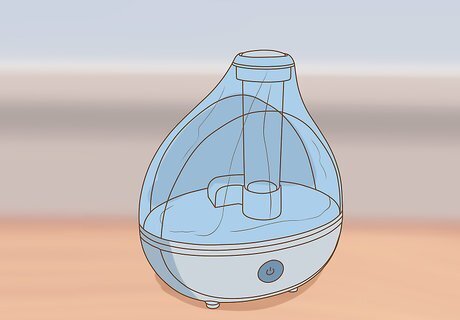
Lessen the humidity. If you found the mold indoors, keep your home well-ventilated. Run air conditioners and dehumidifiers. Make sure large appliances are vented. Use vents or fans in humid rooms like kitchens and bathrooms. Try keeping a window or door open while you’re showering. Run a dehumidifier, portable fan, or vent fan before, during and after taking a shower.
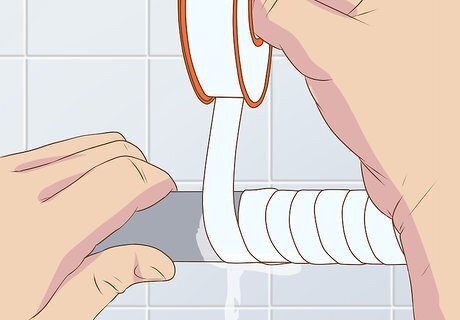
Fix leaks and condensation issues. Inspect the structure and plumbing for any water leaks, and repair them as soon as possible. Insulate roofs, windows and exterior walls. Insulate pipes to prevent moisture from accumulating.

Keep the area and items clean. Clean damp rooms like basements, kitchens and bathrooms regularly. If you notice soil or greasy film forming on surfaces, clean it right away. Keep clothing and fabrics washed, since clean fabrics are less likely to accumulate mold or mildew.
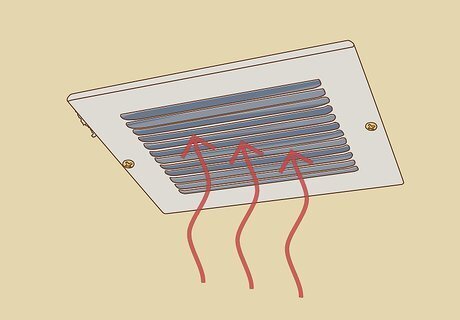
Drive out warm, damp air with heat and an exhaust fan. Heat the house when you notice the air feeling or smelling damp, by turning on the central heat for a short time. Then open windows and doors while running an exhaust fan to force out the warm, damp air. If the area is small, such as a closet, use an electric light such as a 60- to 100-watt bulb continuously.

















Comments
0 comment